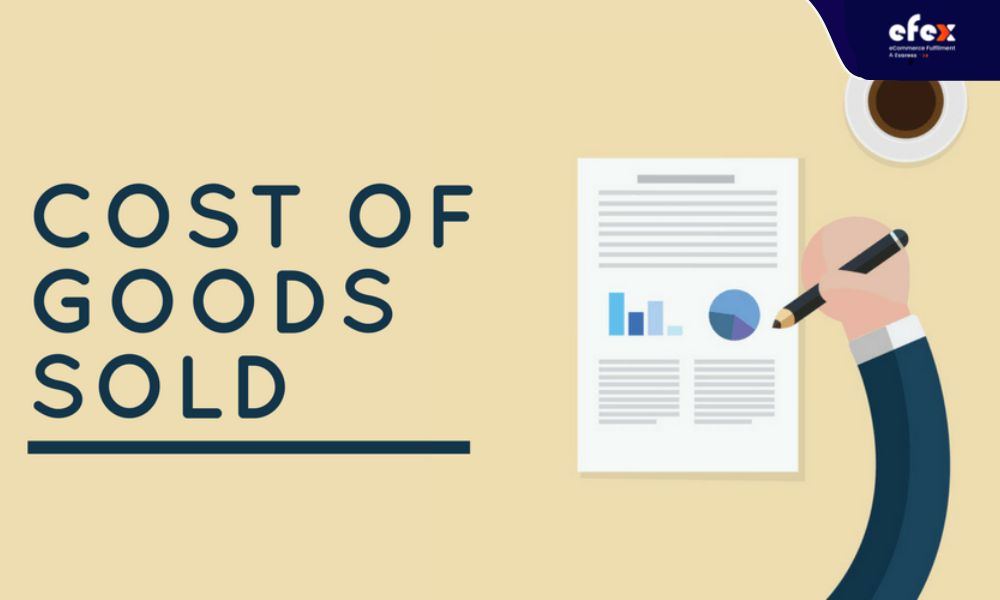
More Helpful Content
The definition of cost of goods sold (COGS) is certainly no stranger to business owners. But whether you have understood this issue and the most effective and scientific way to record the cost of capital. If not, let's find out right away in this article. You will be provided with information related to the COGS and some examples to have a clearer understanding.
The term "cost of goods sold," often known as "cost of sales," or its abbreviation "COGS," is an essential accounting term. Essentially, it shows the cost of goods or merchandise sold to consumers. Unlike inventories, which are shown as an asset on the Balance Sheet, the cost of products sold is listed as an EXPENSE on the Income Statement.
In essence, the cost of products sold is matched with the income generated by the commodities sold. The gross profit of a corporation is calculated by subtracting the cost of products sold from net sales.
When the business sells out of inventory, you will have to pay fees such as shipping costs, purchasing costs, and other related costs. The cost of inventory items sold includes labor, materials, and general expenses. In the case of services, the price of goods includes labor, wages, and insurance. In general, the cost of goods includes all costs directly related to the production of goods and services.
👉 Read More: What Is Dead Stock In Inventory Management?
👉 Read More: What Is Kitting In Manufacturing: Process and Benefits

COGS= Beginning Inventory +Purchases during the period −Ending Inventory
The COGS account shows in the income statement for inventory that is sold. The starting inventory for the year is the inventory that was leftover from the previous year—that is, the product that was not sold the prior year. An industrial or retail company's extra output or purchases are added to the initial inventory.
The goods that were not sold are deducted from the total initial inventory and extra acquisitions at the end of the year. The total cost of goods sold for the year is the result of the computation.
The current asset account is a balance-sheet account. This account contains a line item named inventory. Only at the end of the income statement does the balance sheet reflect the financial position of the company. It is understood that the cost of items reported under total assets is the value of inventory at the end of the financial period.

As for the relationship between Inventory and Cost of Goods Sold (cogs), consider an example of a store that sells only one product below. The store will have 150 units in early 2022. The store-bought another 250 units during the year. Goods available for sale are the sum of the starting inventory and purchased inventory, which is 400 units. If a seller has 170 units at the end of 2022, then Inventory will be reported on the Balance Sheet as 170 units. For example, 120 goods have been sold and the income statement will record the Cost of Goods Sold for 120 units that are no longer available for sale.
👉 Read More: What Does A Backorder Mean: Managing Tips and Solutions
👉 Read More: What is SKU Number? Example and Benefits
The cost of goods sold to your business is shown in your income statement. Your profit and loss are reported in these financial statements. It also shows your company's revenue, income, and expenses. In addition to appearing on the key financial records, you can calculate your profit by subtracting the COGS from your company's sales. The gross profit figure reflects how much you spend on the cost of goods sold. Knowing a company's COGS allows you to calculate net profit and establish a final profit.
Before starting COGS notebook entries, gather information from your books. Gather information such as your starting inventory balance, cost of inventory acquired, overheads (e.g., shipping, storage), and ending inventory counts.

Use the following formula to calculate good sold cost:
COGS = Purchases during the period + Beginning inventory – Ending inventory
The next thing you will do after preparing the complete information is to create a COGS log entry. You should make sure that the inventory balance matches the ending inventory total. You may be asking if the fee for products sold should be debited or credited.
In the cost of goods area, debit your account and credit your inventories and purchases. Inventory is the gap between your purchasing accounts and the fee for products sold. Your COGS Expense account will decrease by credit and increase by debit.
You should credit your Purchases account when purchasing materials to record the number. When you purchase equipment, credit the Purchases account to show how much you spent, and credit the COGS Expense accounts to indicate the increase.
| Date | Account | Notes | Debit | Credit |
| XX/XX/XXXX | COGS Expense | Materials purchased | X | |
| Purchases | X | |||
| Inventory | X |
See some examples of how to keep your COGS entries on file.
Let's say you have an initial balance of $5,000 on your Inventory account. During the accounting period, you spend $2,000 on supplies. You charge $1,000 for ending inventory at the end of the quarter. Debit $6,000 on your COGS ($5,000 + $2,000 - $1,000). $3,000 will be credited to your Inventory account ($5,000 COGS - $2,000 purchases). The COGS chart will be shown as follows:
| Date | Account | Notes | Debit | Credit |
| XX/XX/XXXX | COGS Expense | Materials purchased | 5,000 | |
| Purchases | 2,000 | |||
| Inventory | 3,000 |
Example 2 Assume your business manufactures computers at a cost of $300 per piece. You sold 150 PCs within that time period. Your goods sold cost is $30,000 ($300 x 150). As a log entry, it looks like this:
| Date | Account | Debit | Credit |
| XX/XX/XXXX | COGS | 30,000 | |
| Inventory | 30,000 |
- See more: Order Management System: Definition, Process, And Value
- See more: Order management system for eCommerce: Definition, Key Effect, Benefit
The definition of cost of goods sold (COGS) and related information is extremely important that any business owner needs to understand. With the knowledge mentioned above, we make sure that you can apply the most detailed knowledge to your current business and future business situation, and thereby make more appropriate business decisions to make much more revenue. If you find it useful, do not forget to follow our Fanpage and website to get many interesting articles in the future! See you in the next posts!


